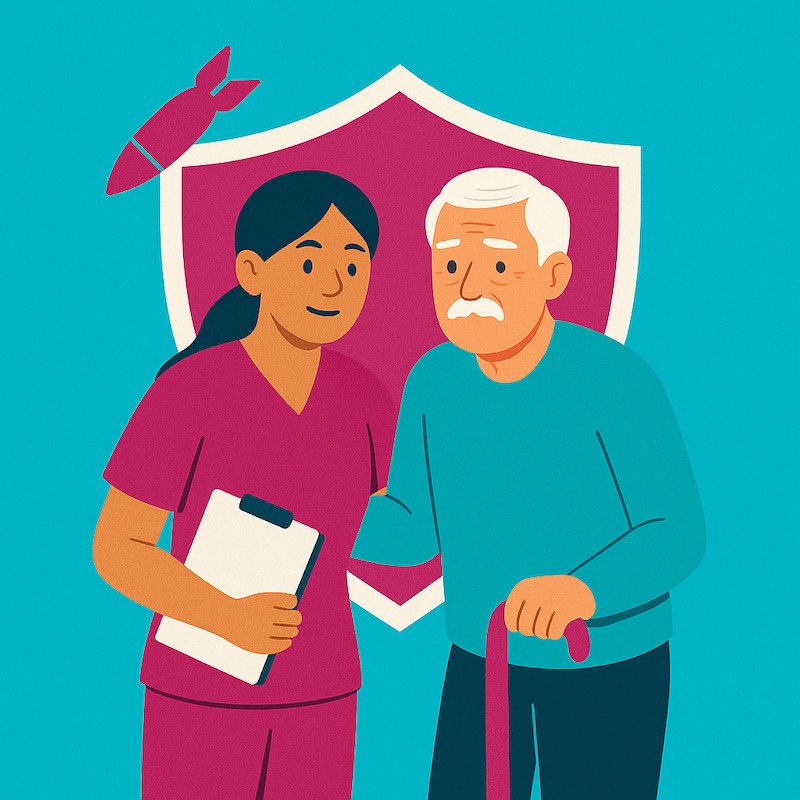Caregiving 101: Managing a Stroke Patient
iSavta | 22.07.2020

“Your patient suffered from Stroke”
Your initial reaction before you even decide to accept the job is:
“Is the patient paralyzed? Half body? Whole Body? Is the patient undergoing therapy?”
Most of us are somehow hesitant to accept this kind of job because we know exactly how difficult it is to take care of these patients. But, it would always depend on the severity of the stroke.
Stroke is also known as brain attack wherein a blood clot is the major culprit. If this happens, there will be an interruption of blood flow to the brain which causes a lot of physical malfunction. For mild strokes, slurring of speech is one of the most common manifestations aside from paralysis, disorientation and sometimes death. Again, it will always vary depending on the severity of the attack and the part of the brain where the attack happens.
As a caregiver, it is your responsibility to aid these patients with the transition that will surely affect their life emotionally, physically and mentally. It is very important that you deal with them with optimism and strategically to make their life easier.
In order for you as a caregiver to efficiently do the job, you have to know which type of stroke your patient is facing.
There’s what we call an Ischemic Stroke which is caused by a blood clot which blocks a part of the brain’s blood vessel. Hemorrhagic Stroke happen when the blood vessel breaks and the person bleeds out internally.
There is also what we call a mini stroke or Transient Ischemic Attack (TIA). With TIA, the blockage happens for a very short period of time within 1 minute to 5 minute time frame. The damage is usually reversible but should not be taken lightly. TIA is said to be an initial blow and usually, a major stroke will eventually come.
Though recovery is possible with TIA, many are extra careful since studies show that people who suffer from TIA experience major life threatening stroke within a year. Knowing the signs and symptoms of TIA or stroke can tremendously help you save your patient’s life when it happens.
Symptoms:
- Sudden severe headache
- Sudden confusion, trouble speaking
- Trouble walking, dizziness, disorientation, loss of balance
- Trouble seeing with one eye or both
- Sudden numbness of hands and arm and face
Learn to know the signs of stroke F.A.S.T
- Face Drooping
- Arm Weakness
- Speech Difficulty
- Time to Call an Ambulance
As a caregiver, as soon as you spot these signs, do not wait for more than 5 minutes to call for help. Take note of the time and moment when you first notice the signs. If your patient is still capable, it is also important to ask her what time she felt the first sign or symptom.
It is also important to keep notes and records from the time it happened until you bring the patient to the hospital. The post-stroke recovery should also be recorded as well as the medications that your patient is taking.
One of the things that your patient will deal with is the difficulty in speaking. This will require patience and understanding from a caregiver. Most of them are mentally capable but couldn’t express themselves well because they couldn’t find the right words to say and the difficulty to say it. This will cause frustration for them and will make them very sensitive and agitated.
Loss of bowel and bladder function are one the common things that you need to consider too. Some patients would never wear an adult diaper and you can’t force them. A caregiver should be ready with this kind of responsibility and do it without hesitation.
The most difficult to deal with though is depression. Depression will cause a wide array of problems. From loss of appetite, mental instability, difficulty sleeping and many others.
Managing a stroke patient is not a walk in the park. It will require patience, empathy, understanding and a whole lot of compassion.
Stroke can both affect the patient and the caregiver. But with dedication and knowing what you are dealing with, it can be managed in a way that it will be easier not just for your patient but also for you as the care provider.











